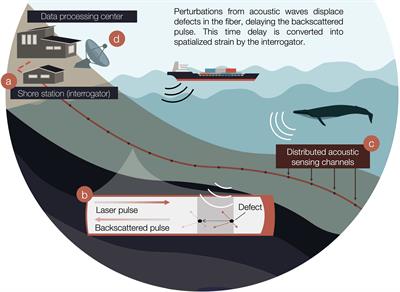Summary made by Quivr/GPT-4
This document is a research study that explores the use of distributed acoustic sensing (DAS) for monitoring baleen whales. DAS is a technology that uses fiber optic cables to detect and measure sound waves. The researchers used this technology to monitor whale vocalizations in the waters around Svalbard, Norway.
The study found that DAS has several advantages over traditional single-point sensing methods. For one, it provides continuous measurements over time and space, allowing for a more comprehensive understanding of whale behavior. The researchers were able to identify different whale species based on the frequency and bandwidth of their calls. They also found that DAS could record vocalizations over tens of kilometers, from protected fjord areas to the open ocean, despite varying noise conditions.
One of the most significant revelations of the study is the potential for DAS to replace traditional seismic exploration methods. The researchers found that each whale call recorded by DAS could be used to provide seismic records for subsurface exploration. This means that in areas where vocalizing baleen whales and DAS overlap, seismic exploration could be replaced by a completely passive method, reducing human activities and noise in the oceans.
However, the study also notes some challenges to using DAS on a global scale. For instance, telecommunication fiber optic cables belong to various entities and require specific agreements to be accessed. Additionally, these cables are often equipped with signal-boosting repeaters that block the interrogator’s laser pulses and reduce the usable length to the first 50-70 km.
In conclusion, this research suggests that DAS has significant potential for whale monitoring and could revolutionize the way we study and protect these creatures. However, more work is needed to overcome the challenges associated with accessing and using telecommunication fiber optic cables.


